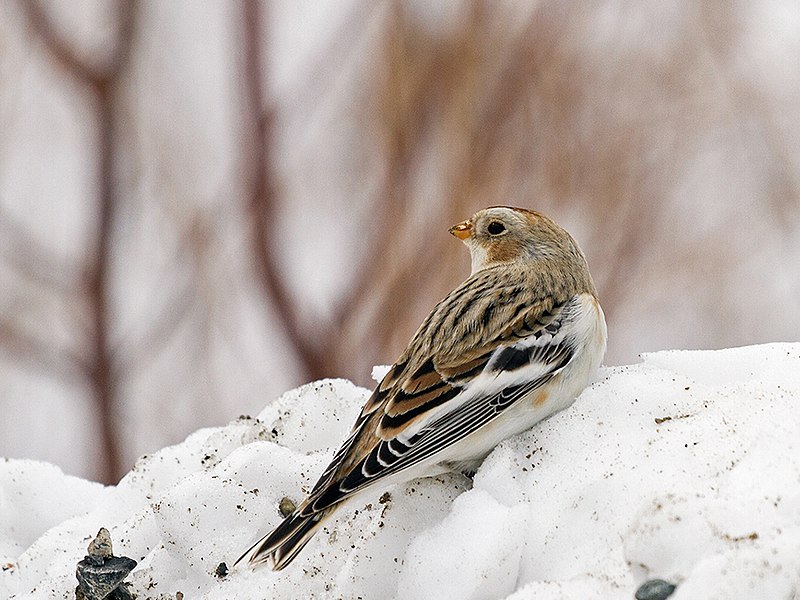Ohio's Winter Birds
There are far too many birds that winter in Ohio to list here. If you were to whittle down the list of Ohio's winter bird species to just the species that live in Ohio only in winter, heading out of the state in Spring, the list would still be far too long to discuss in a simple article such as this. That said, I will focus on two noteworthy winter birds of Ohio. These are the Horned Lark and the Snow Bunting. For each, I will provide a photo, some information on the species, and anything else that I might feel the need to add. Enjoy.
Horned Lark
Eremophila alpestris, better known as the Horned Lark, is certainly the most common of the two species discussed in this article. Horned Larks are year-round residents in the entire state as well as in most of the lower 48, and even a large portion of Mexico. Horned Larks are in the order Passeriformes, which makes them part of a large collection of birds commonly referred to as simply 'songbirds' (yes, that is how songbirds are determined from non-songbirds). Do not confuse Horned Larks, which are true larks, as relatives of Meadowlarks. Meadowlarks are actually blackbirds, related to as diverse a range of species as Red-Winged Blackbirds, Common Grackles, and Baltimore Orioles. Horned Larks are the only true lark species living in any of the 50 U.S. states. Horned Larks are actually fairly small sparrow-like birds, not resembling meadowlarks in any way.
Horned Larks prefer wide open spaces with very little vegatation, which makes them common in many areas of the western U.S. Though year-round residents of the state, Horned Larks are sometimes more easily found during the winter, when they gather into large flocks and sweep the state in search of a plentiful food source. They are generally quite easy to find down rural country roads during or prior to a good old-fashioned snow storm where the larks tend to gather along the side of the roads. This could possibly be due to the birds eating the road salt. Many bird species have been observed eating roadsalt, most notably the Evening Grosbeak, a northern species. The road salt offers minerals necessary for a healthy diet.

Horned Lark1
Snow Bunting
Plectrophenax nivalis is the Snow Bunting. Snow Buntings are without question less common than Horned Larks in Ohio. Snow Buntings are winter-only residents in about two-thirds of the state, traveling further south in the western half of the state than they do in the eastern half. Snow Buntings are also considered songbirds. Snow Buntings are gregarious, remaining in flocks almost constantly. The only exception would be during nesting season, when the buntings will defend their territory from other buntings. However, they will join into a flock again for feeding or roosting.
Snow Buntings are truly birds of the north, spending the breeding season in the far northern reaches of Canada, and areas of Alaska. During the winter the birds will migrate south, but many still spend the winter in central and southern Canada. Snow Buntings are usually never easy to find in Ohio. However, in central Ohio enormous mixed flocks of Snow Buntings, Horned Larks and Lapland Longspurs have been recorded where a family feeds the birds a large grain mix every day. You can read about this here.

Snow Bunting2
1 Photo via Wikimedia Commons
2Photo via Wikimedia Commons